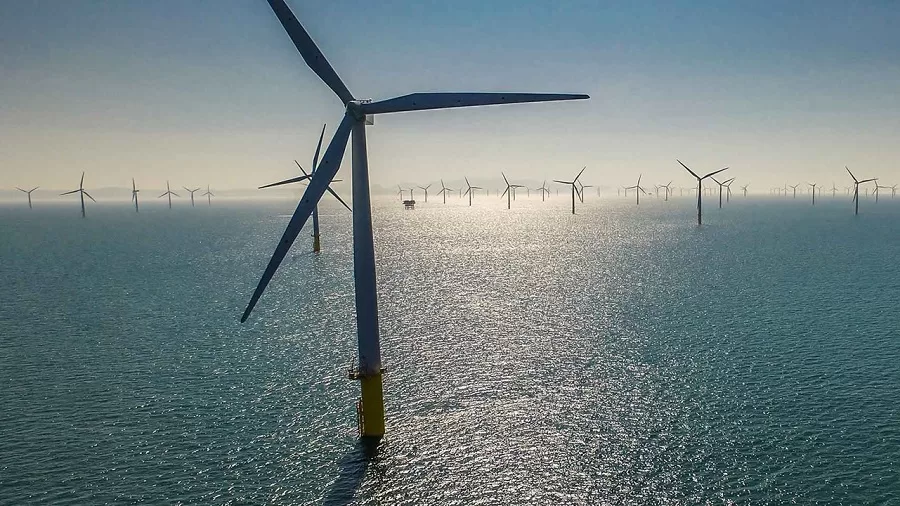Resources
Why the UK Is Becoming the Launchpad for Clean Energy Innovation

- Given its robust agenda on this issue, the UK has now evolved into a potential global hotspot for potential investment in alternative energy, with remarkable offshore wind progress that has at once triggered a grand Harbour Industrial Strategy.
- With the expansion of wind, hydrogen, and carbon sequestration sectors, the UK is well-positioned to excel in renewable energy technology development.
The UK clean energy scene throws up headlines of growth and, perhaps, is well on its way to becoming a leading force in the UK economy. Remember that UK PLC wants to be the number one choice for global companies looking to scale operations in the world in clean energy.
This combination of large policy incentives and an incredible record in offshore wind generated an impressive client base for growing businesses wanting to reinvent themselves in the arena of clean energy.
The UK Takes a Clean Energy Lead.
But, again, what brings the advantage of the UK to a great height for clean energy? For most of it, it’s the policies already in place and the planning ahead. Inspiring projects such as the Clean Power 2030 Action Plan, fast approval procedures for large energy projects, and binding 2050 net-zero targets have all played a part in a formidable beginning.
But strictly not in letters on paper, a ream of clean energy wagers and deposits, straight into the most avant-garde emerging hydrogen technology and carbon capture industry.
And most importantly for investors, a sense of stability is all that matters.
“Stability is crucial,” says Tom Glover, UK Country Chair for energy giant RWE. “A predictable and profitable policy environment ensures we can plan projects without fear of retrospective changes, reducing financing costs and benefiting consumers.”
Offshore Wind: Britain’s Green Powerhouse
To be precise, the United Kingdom is a powerhouse in the installation of offshore wind. It ranks second only to China in this competition for installed capacities. Since the installation of the first-phase commercial wind farm in 2004, the turbine industry has developed substantially, employing about 32,000 people; this number is expected to triple by 2030.
The consequent development affects local communities concretely and with a degree of certainty, especially in Wales and North East England, where previously declining coastal regions are now turning into sites of new employment and investment through wind energy.
RWE’s Green Footsteps Across the UK
RWE is one of Europe’s major energy companies, demonstrating how multinationals are seeing the UK’s potential for clean energy. As the top electricity generator in the UK, RWE is not now stepping forward on renewables but rather exploring its wider potential—the sun, hydro, wind, gas, flexible generation, and storage have all been made a significant part of their vision. RWE discusses an investment of €8 billion into clean energy structures in the UK up to 2030. This embraces the Sofia offshore wind farm under construction off the northeast coast and the Norfolk Offshore Wind Zone, the candidate region for the biggest wind power globally.
“RWE’s purpose—‘Our energy for a sustainable life’—guides everything we do,” explains Glover. “We’re not just growing renewables but investing in the systems that make clean energy reliable.”
Innovation is the Way Forward.
The UK is also foraying into the course of green hydrogen and carbon capture and storage (CCS). Such advanced technologies are crucial for hitting climate targets, and the UK is drawing on the experience of the North Sea oil sector to make it happen.
With the advent of a newer industrial strategy, the government further aims to empower these high-growth sectors, thus bridging the massive infrastructure gap between the UK’s net-zero goals and whatever is required, materially speaking, toward them.
“With a long-term strategy, businesses like ours can invest more confidently,” says Glover. “It’s about creating a resilient, decarbonised power system while delivering jobs, innovation, and energy security.”
A Closer Look: Clean Energy in Action
Wales has made significant clean energy investments, including the £2 billion Gwynt y Môr wind farm, which is co-owned by RWE. It is one of the world’s top offshore wind farms, generating enough electricity to power around 467,000 houses per year. During construction, it created approximately 700 jobs, sustaining a sustainable job market with 100 long-term positions. Meanwhile, RWE’s Pembroke Net Zero Centre incorporates hydrogen production and carbon capture into existing infrastructure, taking a significant step towards establishing South Wales as a low-carbon innovation hub.
Enticing Commitment!
For the corporate world where offshore wind, green hydrogen, or carbon capture triggers possibilities for entry, moving into the UK is more than safe: it is wise, too. In light of its track record in the delivery of gigantic clean energy projects, plus a government concentrated wholly on future-proofing the economy, there are countless reasons beneficial to being an investor.
As RWE forges an even deeper foothold in clean energy projects across the United Kingdom, the authors anticipate that the United Kingdom’s forthcoming industrial strategy will bring about more growth prospects, particularly for global companies anxious to participate in Britain’s green transition.
The country counts on all the appropriate tools for the enrichment and sustainability of its strategic alliance and a wide array of multidisciplinary institutions for innovation and investment. When properly complemented with the necessary combination of regulations, support, and infrastructure, the UK is sure to become a global superpower in clean energy.



















































